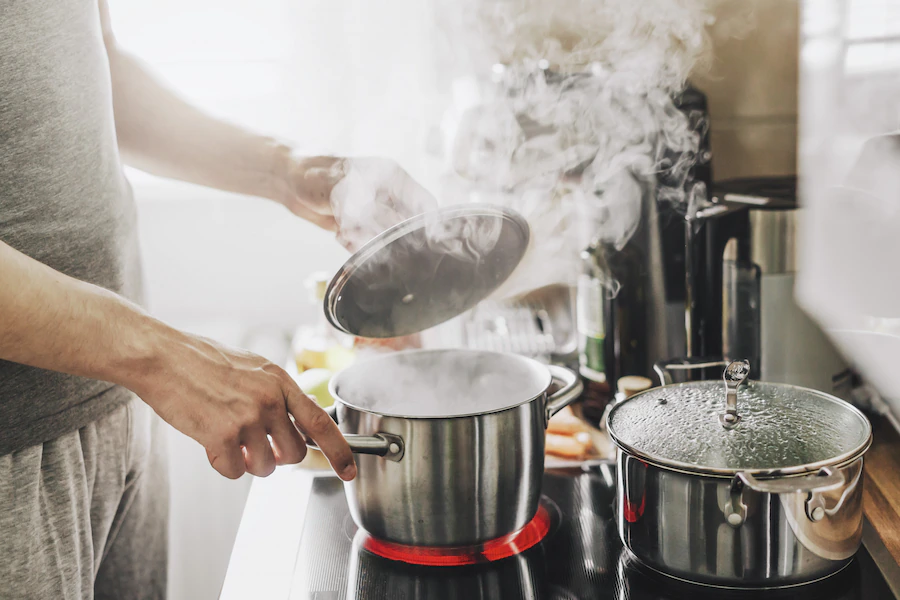Parboiled rice is a form of converted rice that is far better for you than regular rice. It has a subtler flavor and better fiber content than regular rice. You can cook it with your rice cooker, a seasoned skillet, or the stovetop. Then, drain it and use it in recipes for everything from stir-fries to soups. There are numerous recipes that use parboiled rice. Listed below are a few of my favorites.
Parboiled rice is a converted rice
Parboiled rice is a type of cooked rice that has been partially steamed and then boiled in the husk. This process makes rice easier to handle and improves the nutritional profile. It also changes the texture and is more resistant to weevils. Read on to learn about the benefits of parboiling. Here are a few of the most important benefits of parboiled rice. Let’s take a closer look at parboiled rice and why it’s better for you than the rest of the processed version.
Parboiled rice has been around for a long time and is a great way to add some variety to your diet. It is easier to cook, is a great source of nutrients, and is often used in Asian dishes. It is also better for your health than regular rice because it is loaded with antioxidants and phytonutrients. Parboiled rice is higher in Vitamin B-6, calcium, and fiber than normal rice.
Parboiled rice can be used in many different dishes and can be cooked with vinegar or sauce. In fact, it is an extremely popular addition to stir fry dishes. It’s even gluten-free. Most brands of parboiled rice are partially cooked before being sold. The process is called parboil, and helps retain the natural vitamins and minerals found in the rice. In addition, parboiled rice has a longer shelf life.
The key difference between parboiled and raw converted rice is in the cooking process. Raw converted rice is cooked, but parboiled rice is a form that has been parboiled. Parboiling transforms starches so that they hold their shape better and are less likely to stick together. It is also less sticky than instant rice, so it has a dryer consistency than its instant cousin. A converted rice is not as flavorful as the uncooked variety, but it is a good alternative to white rice.
It is a better source of fiber, calcium, potassium, niacin, and thiamine
Brown rice contains more dietary fiber than white rice. White rice loses the bran, which contains mostly insoluble fiber and virtually no soluble fiber. Both brown and white rice contain varying amounts of resistant starch, which helps your digestive system produce butyrate, which improves gut health and reduces your risk of colon cancer.
A cup of parboiled rice contains about 2 to 2.5 percent of your daily recommended amount of calcium, potassium, and iron. It is also an excellent source of manganese, which helps lower blood pressure, prevent heart disease, and boosts the immune system. Additionally, parboiled rice is rich in phytonutrients and antioxidants, which help fight against disease and promote good health. Its large quantity of anthocyanins helps prevent cancer and reduce inflammation.
Parboiled rice also contains phytochemicals, which are non-nutritive plant chemicals with disease-preventing and protective properties. These compounds are concentrated in the bran and pericarp of rice kernels and can protect your health by preventing oxidative damage to your food. In addition, phytochemicals have a wide variety of beneficial biological activities.
Whole grains contain more nutrients than white rice, which is why brown rice is a better source of these nutrients. It is also lower in calories, has more fiber, and is a better source of niacin, calcium, and thiamine. It also has a higher level of protein and unprocessed carbohydrates than white rice.
It has a more subtle taste than regular rice
Parboiled rice, also known as converted rice, is made by partially cooking the grain while still in its husk. This method used to be more convenient to use, as it allowed the rice to retain its original vitamins and minerals. Unlike regular rice, parboiled rice doesn’t need the lengthy cooking time required for whole grain varieties. And, the taste is much more mild than regular rice. Its versatility makes it a perfect substitute for regular rice in many dishes.
Parboiled rice also has a softer texture than regular white rice. Because of this, it can be steamed without losing its shape. The added moisture helps the rice retain its nutrient content. Because it’s not as sticky, parboiled rice is more suitable for thick curries. It’s inexpensive, nutritious, and versatile. However, it lacks the stickiness of white rice, which is essential for Asian cooking.
Although parboiled rice is not a completely different grain, it is often mistaken as such. It is made by partially cooking the grain in its husk. This step was first done to make rice easier to process by hand. However, it also preserves the original vitamins and minerals in the grain. In addition, parboiled rice doesn’t require the long cooking time required for whole grains, and it is more flavorful than regular rice.
In addition to its nutritional value, parboiled rice has a more nutty taste than regular rice. While it may be slightly sticky and have a softer texture, it is more flavorful and has more subtle taste than regular rice. When compared to regular rice, parboiled rice is slightly yellow in color and has a nutty flavor. It’s also a great choice for rice dishes that are high in protein and need a little more flavor.
It can be cooked in a rice cooker
Despite its name, parboiled rice is not a different type of rice. It gets its name from the process of partially boiling rice in its husk before cooking it. This method preserves the original vitamins and minerals of the grain. In addition, it does not require as long a cooking time as whole grains. Parboiled rice is also easier to digest than uncooked rice. Compared to regular rice, parboiled rice retains its shape and flavor better, and it is much healthier. Plus, you can grind it to make rice flour – another great use for this versatile grain!
The first step in cooking parboiled grains is to rinse them thoroughly. Place the rice into a saucepan and add two and a half cups of water to each cup. Cover the pot and bring the water to a boil. Cook the rice for about 20 minutes. It should be tender and soft enough to bite into. It is also possible to cook parboiled rice in a rice cooker. Follow the manufacturer’s instructions to add the ingredients and turn on the device.
Once the water boils, pour the rice into the rice cooker. Then, sprinkle some butter or salt on top. Once the rice has cooked, cover it to prevent it from overcooking. Parboiled rice can be stored for up to three days. However, it is best to refrigerate it immediately after cooking it. You can also refrigerate it for a few hours. A shallow bowl is perfect for cooling the cooked rice quickly.
To cook parboiled rice, you must adjust the water-to-rice ratio. Normally, you should use two and a half cups of water to one cup of rice. Once it’s ready, the rice cooker will turn off automatically. You may want to adjust the cooking time to achieve the perfect parboiled rice. If the parboiled rice is too dry, you can add a little salt to the water.
It can be cooked in a Ninja Foodi
The Ninja Foodi has many different uses, from making a tasty bowl of noodles to frying rice. It can replace a food steamer and a rice cooker, and it is capable of cooking plain and flavored rice. The Ninja makes it easy to cook multiple dishes with one pot, reducing the number of dishes and cooking times. You can also use it to make parboiled rice, which is a staple of many Asian dishes.
The Ninja Foodi uses low pressure and high temperature to cook rice. You should rinse the rice first, then add 2 cups of water. Add a pinch of salt, and then secure the lid. Turn the steam valve on, and select “Pressure Cook” or “Steam” to cook the rice. When the cooking process is complete, you can fluff the rice with a spoon and serve it.
If you’re cooking for one or more people, it’s important to cook the rice separately. Alternatively, you can prepare the rice with one of the Ninja Foodi’s preset settings. You can cook a cup of rice at a time in the Ninja Foodi and add more water as needed. Once the rice is cooked, you’ll be able to serve it alongside your favorite dish.
The rice you cook in the Ninja Foodi can be parboiled or plain. Both types of rice can be frozen for later use. This rice can be used as a starchy base for a curry or a stew. Once cooked, it’s best to consume the rice within two to three months. Soak the rice beforehand to remove excess starch. Also, parboiled rice can be a healthy choice for vegans, as it’s lactose and gluten-free.
Podobne tematy




